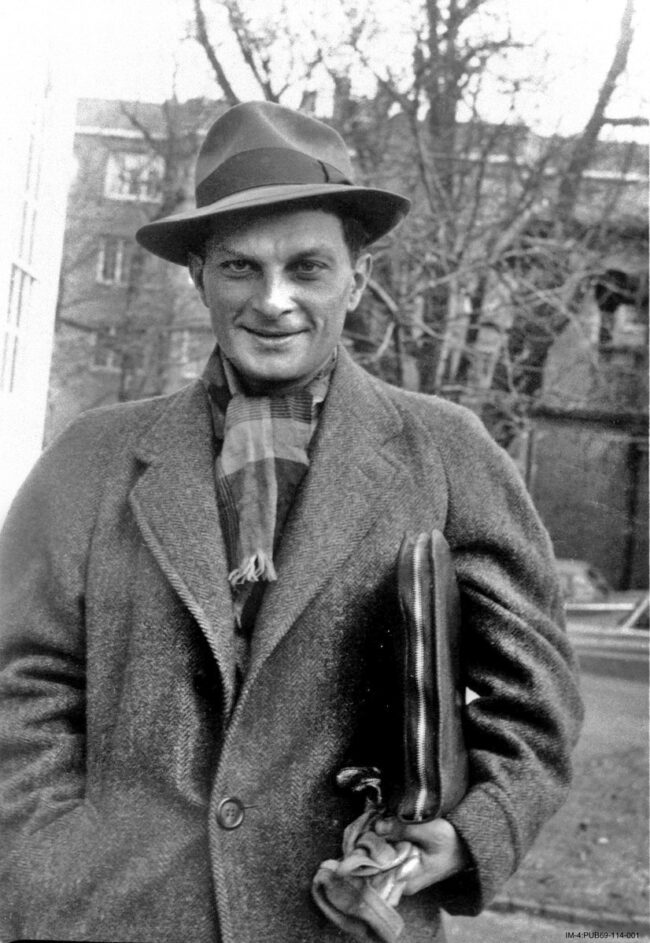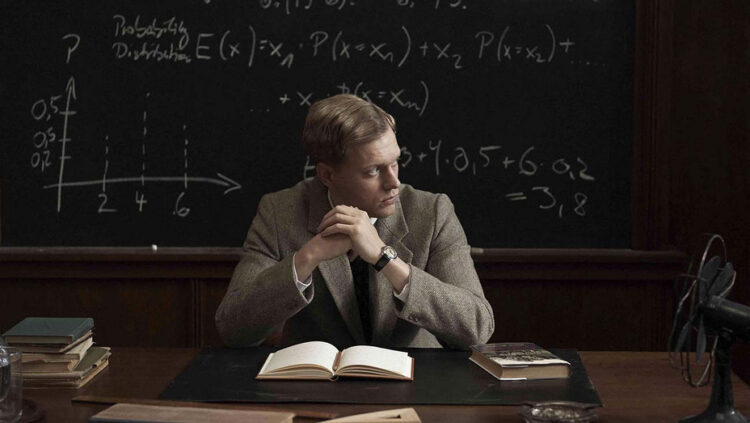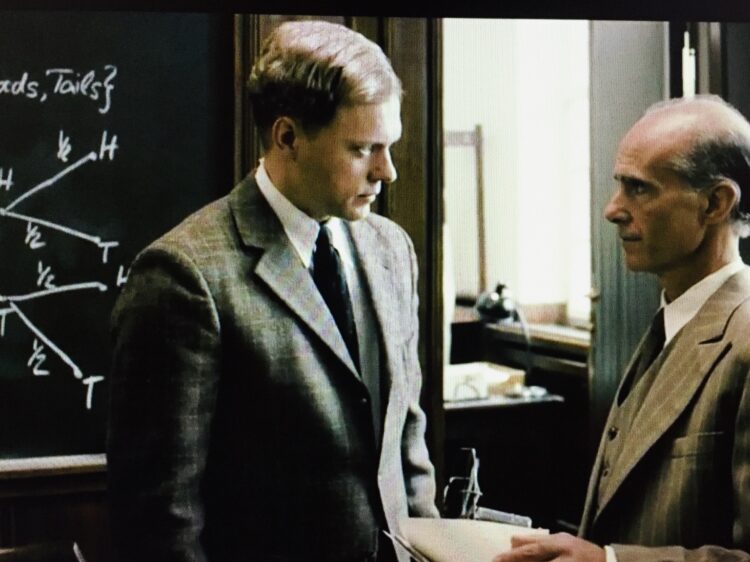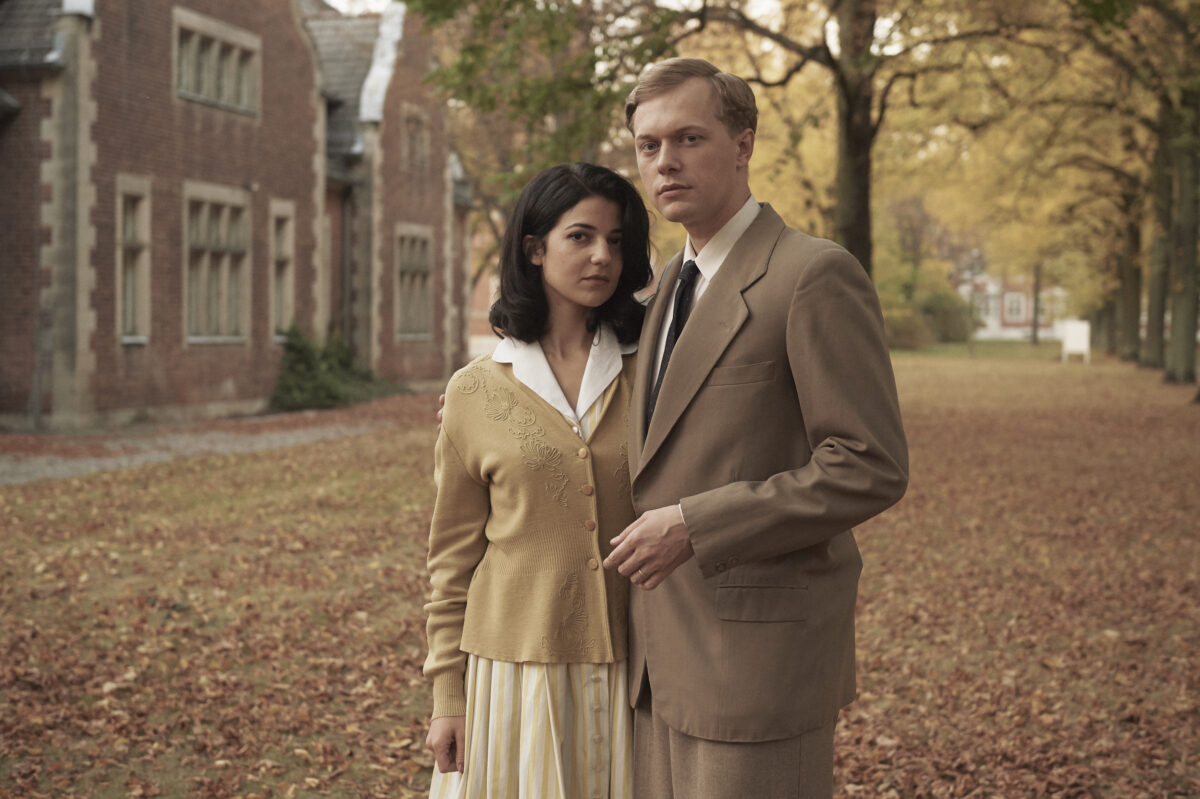The late Polish-Jewish mathematician Stanislaw Ulam was one of the key figures in the development of the atomic bomb, which was created by a cadre of mainly European-born scientists during World War II.
Ulam worked on the Manhattan Project with a brilliant group of physicists, mathematicians and engineers at the Los Alamos laboratory in New Mexico.
Among his colleagues were John von Neumann and Edward Teller. All three men figure prominently in Thor Klein’s absorbing movie, Adventures of a Mathematician, which will be screened online at the autumn edition of the Toronto Jewish Film Festival, which runs from October 22 to November 1.

The scion of a wealthy family from the eastern city of Lvov, Ulam arrived in the United States in the mid-1930s at the invitation of von Neumann, a Hungarian Jew. As the film gets underway in the early 1940s, Ulam (Philippe Tlokinski) is an instructor at Harvard University, while his younger brother, Adam (Mateusz Wieclawek), is a student there.
They’re both worried that their parents and sister are in danger now that Poland has been occupied by Nazi Germany. This sub-theme is disposed of quickly and bloodlessly, rarely to be mentioned again. Stanislaw and Adam — a budding Soviet studies scholar — would never see them again. They were murdered by the Nazis during the Holocaust.

Klein’s film, which is largely set in Los Alamos from 1944 onward, deals primarily with the U.S. effort to build an atomic device before Germany. Ulam joined the Manhattan Project at the urging of his friend and colleague, von Neumann, who would later play a central role in the invention of the digital computer.
Prior to Ulam’s departure from Cambridge, he meets, then marries, a French Jewish woman named Francoise (Esther Garrel). There is not much chemistry between the pair, and their relationship contributes little to the storyline.
Tensions arise when Ulam, a cool intellectual, becomes embroiled in an argument with Teller (Joel Basman), a hot-headed scientist, over the utility of building a hydrogen bomb. Ulam believes that the United States should focus its energies on an atomic bomb.
Klein omits the laborious technical process whereby the A-bomb is built and tested. In quick succession, the war ends, the first atomic bomb is field tested, and the U.S. drops an atomic bomb on the Japanese city of Nagasaki.
The blast kills 130,000 Japanese and leads to Japan’s surrender. Some of the scientists are adamantly opposed to the usage of weapons of mass destruction to wage war. As one of them says, “We murdered civilians.”
Ulam, in the meantime, is incapacitated by a brain inflammation. Having recovered, he returns to Los Alamos, where he solves a devilishly difficult problem that enables the United States to construct a hydrogen bomb, Teller’s pet project.
Ulam’s Jewish identity is dealt with perfunctorily. When von Neumann suggests in 1949 that Ulam should immigrate to Israel, he ignores the suggestion as completely irrelevant.

Ulam’s brother, Adam, appears to be seriously tormented by his Jewish heritage. Adam brusquely informs him that he intends to cut himself off from his Jewish identity, but this issue is neither explored nor resolved.
Nor does Klein address Ulam’s implicit qualms about atomic weapons. In a sad and somber moment, he laments that only “ash and death” surround him. But this idea withers on the vine, much to the film’s disadvantage.
Nevertheless, Adventures of a Mathematician is a worthy film, distinguished by an intelligent script, a fine cast and picturesque desert backdrops.
